Global food preservatives market is estimated to be valued at USD 3.47 Bn in 2024 and is expected to reach USD 4.72 Bn by 2031, exhibiting a compound annual growth rate (CAGR) of 4.5% from 2024 to 2031.
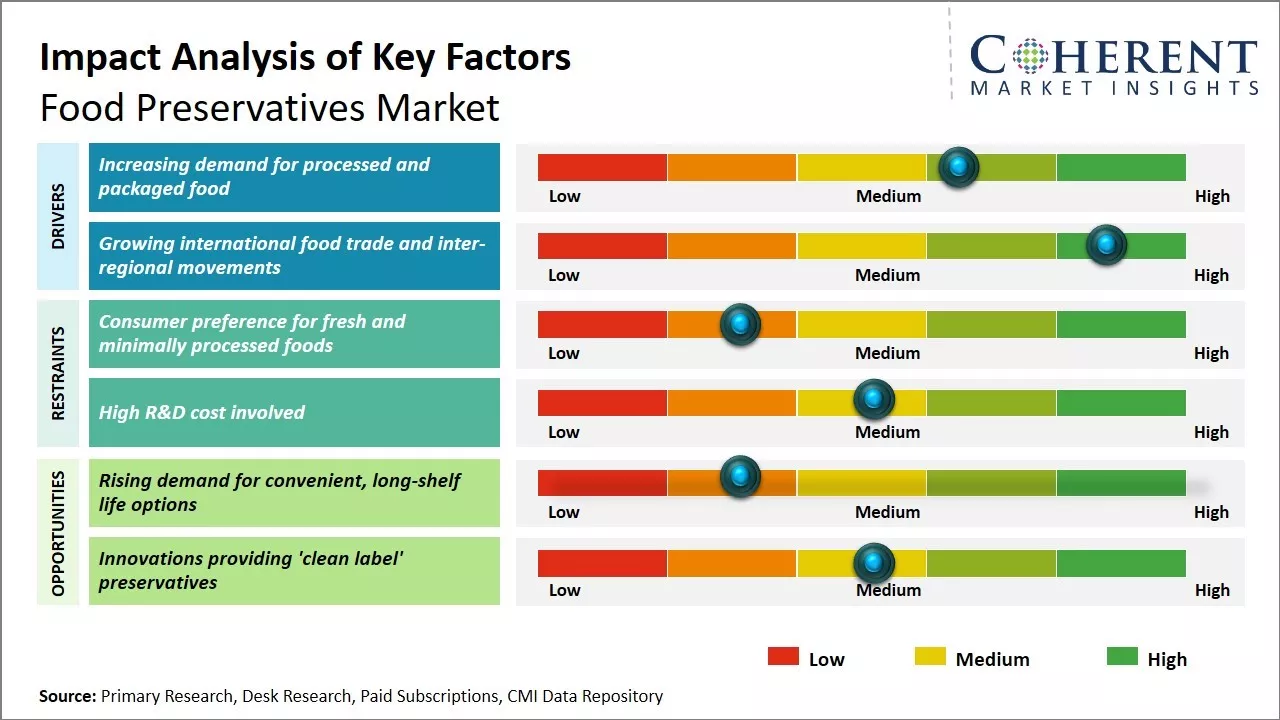
To learn more about this report, request a free sample copy
Concerns around food safety and increasing demand for processed and packaged food items are expected to drive the market growth. The market is expected to witness significant growth over the forecast period. Factors such as increasing demand for frozen and processed food products due to changing lifestyles and busier routines will support the increased use of food preservatives. Growing food industries and improving standards of food safety and quality are expected to drive the food preservatives market growth during the forecast period.
Increasing demand for processed and packaged food
With rapid urbanization and busier lifestyles, consumers are increasingly opting for packaged and processed foods that offer convenience without compromising on taste. For instance, according to the data published by Food and Agriculture Organization in 2021, the demand for convenient, pre-prepared foods has increased dramatically as working professionals and nuclear families hardly find time to prepare fresh meals on a daily basis. Food processing aids in enhancing the shelf life of foods without requiring refrigeration during storage or transportation. This allows foods to retain their quality and prevent spoilage for long periods. With the ability to store and consume at one's convenience, processed foods have become quite popular. However, processed foods also need specific preservatives to prevent microbial growth and nutritional deterioration throughout their shelf life. High temperatures used during processing can kill microbes but may not guarantee safety throughout distribution and storage at ambient temperatures. This is where food preservatives play a critical role through their antimicrobial and antioxidant properties. By inhibiting bacteria, molds, yeasts and oxidation reactions, preservatives ensure processed foods remain safe and fresh for the promised shelf life. Their usage also helps food companies adhere to stringent quality and safety regulations. As packaged food consumption continues to rise with urban lifestyles, demand for necessary preservatives is also increasing at a strong pace.
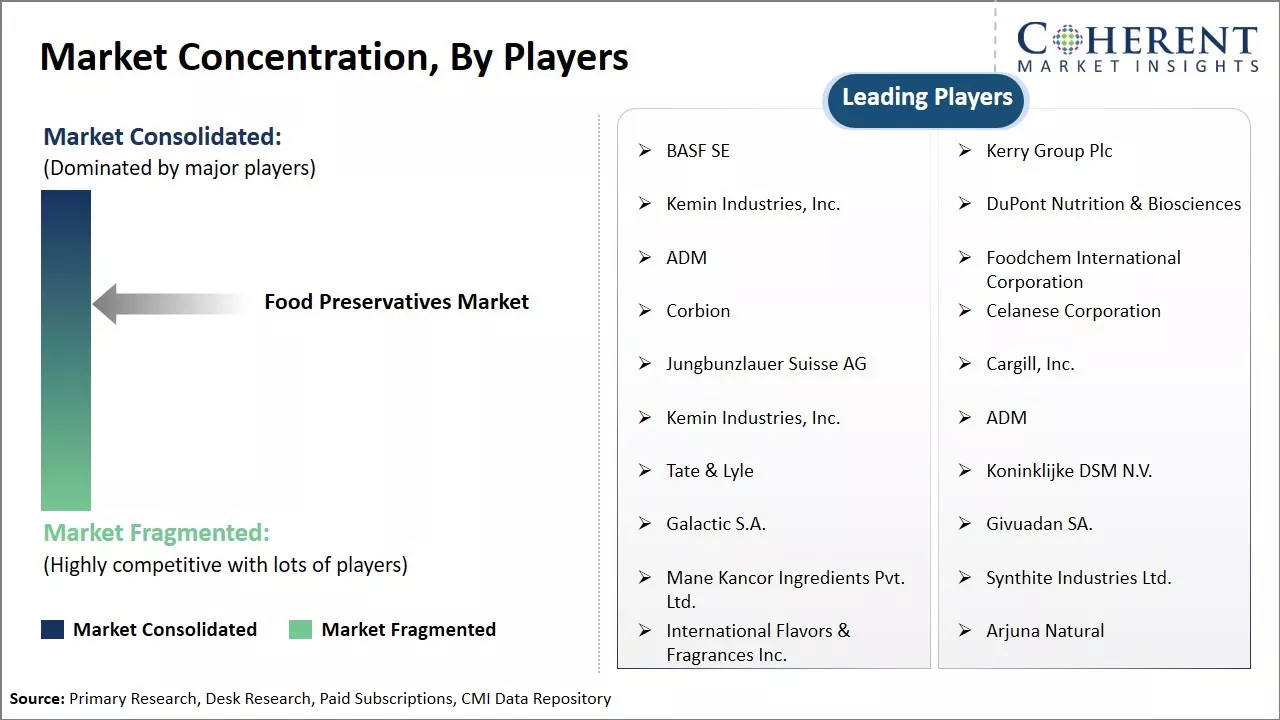
To learn more about this report, request a free sample copy
Growing international food trade and inter-regional movements
In the current globalized environment, international food trade has intensified significantly. Many countries import and export a wide variety of food products to meet local demands and expand business overseas. However, long-distance transportation and uncertain supply chains increase vulnerability to quality issues arising from microbial or oxidative deterioration.
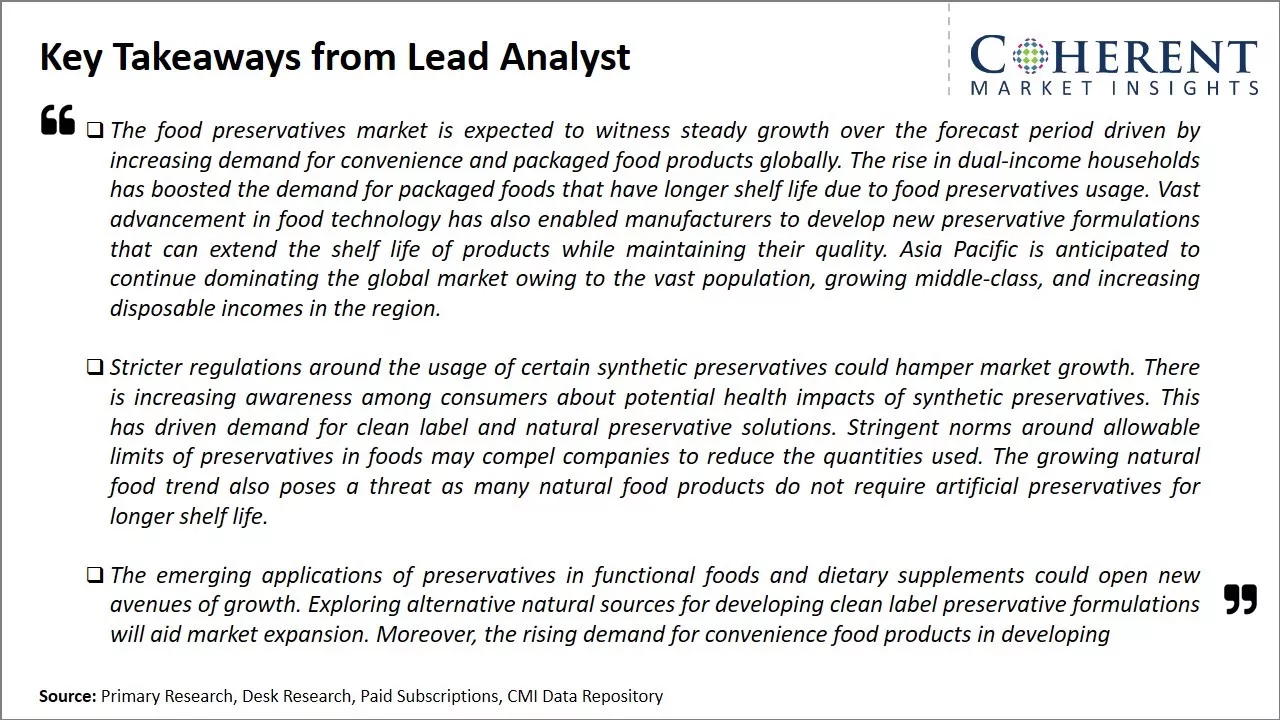
To learn more about this report, request a free sample copy
Market Challenges: Consumer preference for fresh and minimally processed foods
Global food preservatives market faces several challenges. Consumer preference for fresh and minimally processed foods poses a threat to products containing artificial preservatives. Stringent regulations around the use of certain preservative chemicals also limit growth opportunities. Customers increasingly demand natural preservatives from plant and mineral sources rather than synthetic alternatives. This places pressure on manufacturers to invest in natural product development and certification.
Market Opportunities: Rising demand for convenient, long-shelf life options
The global population is rising rapidly and demand for convenient, long-shelf life options is increasing accordingly. Food producers need effective preserving techniques to meet this need. As producers expand into new international markets, preservation allows access to regions with limited cold chain infrastructure. Growth in packaged convenience foods and ready meals also requires comprehensive preservation solutions.
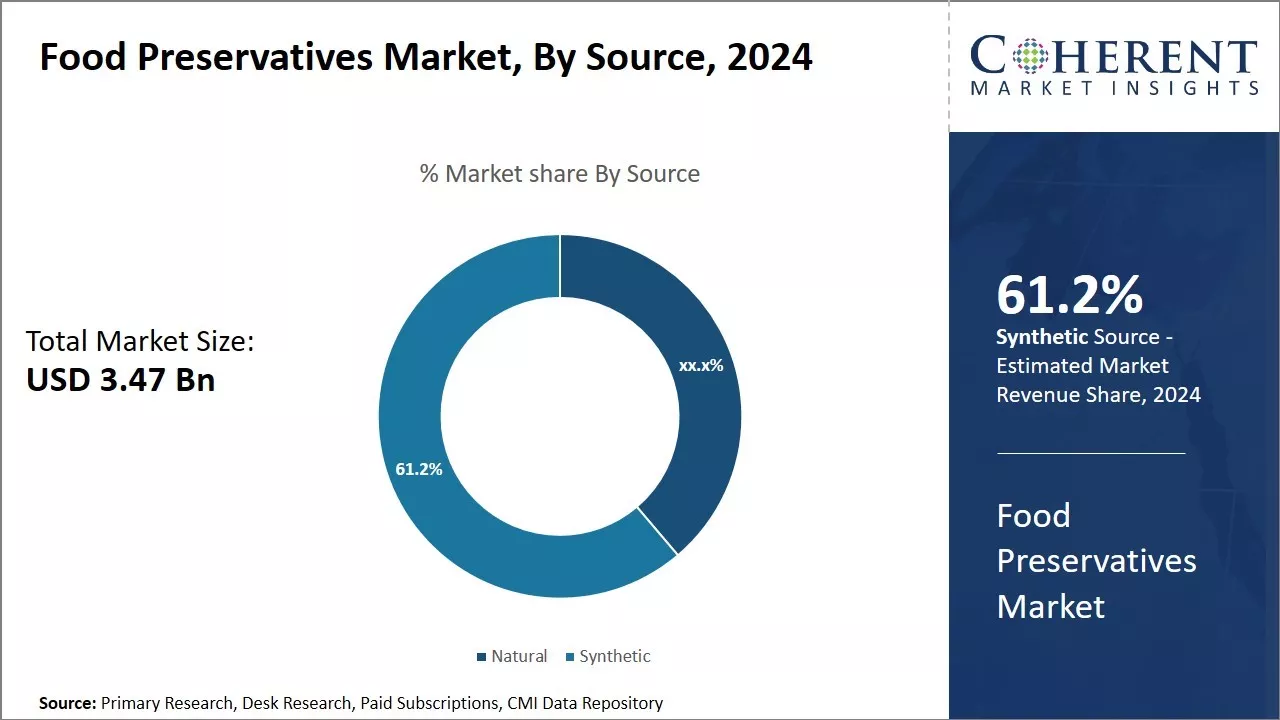
To learn more about this report, request a free sample copy
Insights, By Source: Cost and Shelf-life AdvantagesIn terms of source, synthetic segment is estimated to contribute 61.2% of the market share in 2024 due to its cost effectiveness and ability to extend shelf-life over longer periods as compared to natural preservatives. Synthetic preservatives such as sodium benzoate, sulfur dioxide, and sorbic acid are highly popular among food manufacturers as these can be easily produced in large volumes and deliver reliable and consistent preservation even in minute quantities added to recipes. While natural preservatives tend to be more expensive to source and extract, synthetics can be precisely formulated in laboratories to target specific spoilage microbes and precisely designed molecule structures for maximal effectiveness. Their lower production costs are easily passed onto customers in the packaged foods industry looking to maximize profits through extended shelf-stable periods before products expire. The ease of integration into established food processing facilities without major equipment changes has also helped synthetic preservatives gain scale over alternative natural options. With the global demand for packaged and processed convenience foods surging, synthetics provide an attractive value proposition for industrial food producers focused on cost optimization at scale.
Insights, By Functionality: Targeted Inhibition of Harmful Bacteria
In terms of functionality, anti-microbial segment is estimated to contribute 41.2% share of the food preservatives market owing to its ability to directly inhibit the growth of harmful bacteria, molds and yeasts responsible for food spoilage. Anti-microbial preservatives disrupt the metabolic activities and cellular structures of these microorganisms through distinctive modes of action such as DNA/RNA inhibition, enzyme system interaction, and changes to cell membrane permeability. These work quickly to establish protective barriers against pathogens during food processing and storage in a way that anti-oxidant preservatives alone cannot. Common anti-microbial agents like sodium nitrite, propionates, and sulfur dioxide have been proven highly effective over decades of usage against a wide spectrum of foodborne microbes including Salmonella, Listeria, and E. coli. With growing awareness about health risks posed by contaminated foods and rising international food safety standards, anti-microbial ingredients provide manufacturers and consumers reliable reassurance through verifiable microbial decontamination. Their widespread adoption across global food chains stem from their ability to ensure long-term microbial safety of products from production to consumption.
Insights, By Application: Demand from Meat, Poultry and Seafood Manufacturers
In terms of application, meat, poultry and seafood segment is estimated to contribute 41.9% share of the food preservatives market owing to preservation needs of processed protein products. These food categories require robust protection against spoilage bacteria like Pseudomonas and Lactobacillus during processing, packaging, distribution and storage. Meat is especially susceptible as it consists of moisture, proteins and nutrients optimal for microbial growth. Preservatives enable processed meats to attain longer ambient shelf lives of 6-12 months without refrigeration and are thus invaluable to industrial meat producers catering to global trade. These establish multiple barriers against pathogens entering meat supply chains and establishes the microbiological safety essential for public health. With rising global demand for packaged meat products, processed seafood meals and value-added poultry items, preservative usage has scaled up manifold across slaughterhouses and canneries worldwide.
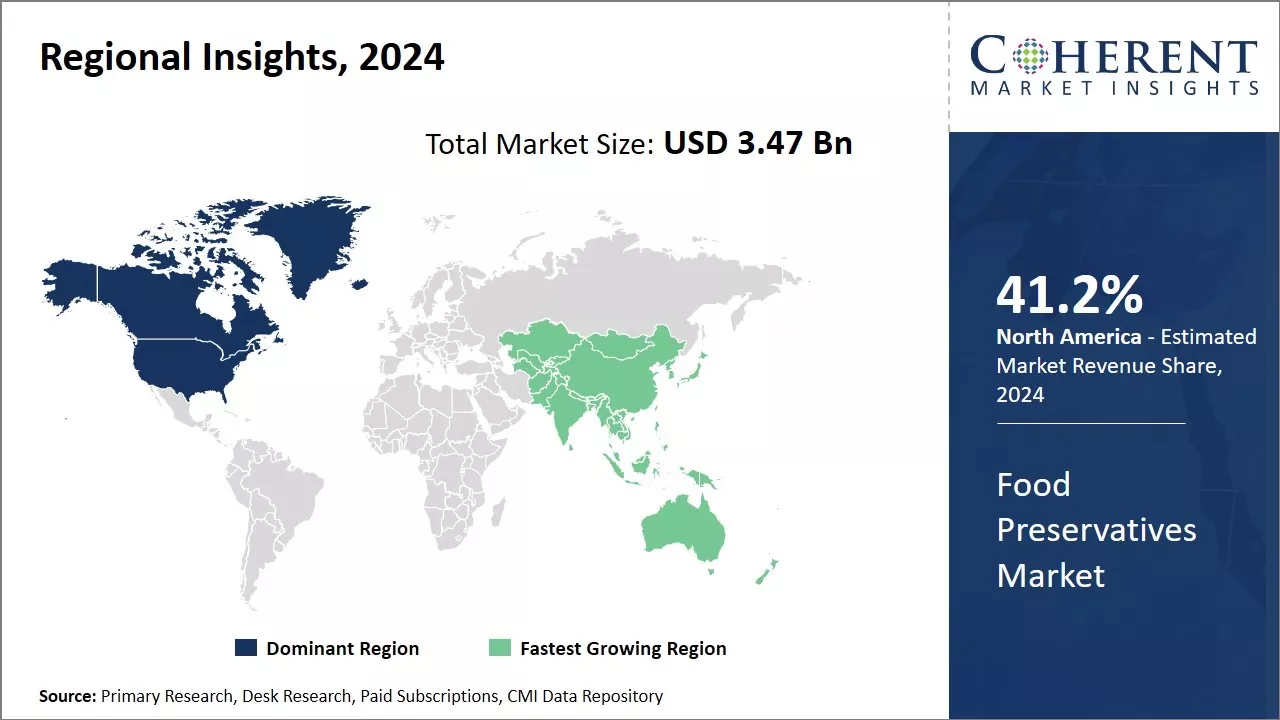
To learn more about this report, request a free sample copy
North America has established itself as the dominant player in the global food preservatives market over the years with 41.2% share. With a strong presence of leading food manufacturers and mature food processing industry, the demand for various preservatives remains high. Companies in the U.S. and Canada have sophisticated distribution networks and supply chains that ensure preservatives are easily available across the region. There is also a growing demand for convenient packaged and processed foods that require extensive use of preservatives to increase shelf life. Stringent food safety regulations further drive the need for incorporating preservatives.
The Asia Pacific region has emerged as the fastest growing market for food preservatives globally. Countries like China, India, Japan and other As disposable income increases, demand for packaged and ready-to-eat convenience foods has increased. Both international and domestic food companies have established sizeable production bases in these developing economies to cater to this expanding market. Coupled with improving cold chain infrastructure and rising urbanization, more preservatives are getting incorporated during food manufacturing and distribution in Asia Pacific.
Food Preservatives Market Report Coverage
| Report Coverage | Details | ||
|---|---|---|---|
| Base Year: | 2023 | Market Size in 2024: | US$ 3.47 Bn |
| Historical Data for: | 2019 to 2023 | Forecast Period: | 2024 to 2031 |
| Forecast Period 2024 to 2031 CAGR: | 4.5% | 2031 Value Projection: | US$ 4.72 Bn |
| Geographies covered: |
|
||
| Segments covered: |
|
||
| Companies covered: |
BASF SE, Kerry Group Plc, Kemin Industries, Inc., DuPont Nutrition & Biosciences, ADM, Foodchem International Corporation, Corbion, Celanese Corporation, Jungbunzlauer Suisse AG, Cargill, Inc., Kemin Industries, Inc., ADM, Tate & Lyle, Koninklijke DSM N.V., Galactic S.A., Givuadan SA., Mane Kancor Ingredients Pvt. Ltd., Synthite Industries Ltd., International Flavors & Fragrances Inc., Arjuna Natural |
||
| Growth Drivers: |
|
||
| Restraints & Challenges: |
|
||
*Definition: Food preservatives market refers to the manufacturing and sale of various chemical preservatives that are added to food products to prevent decomposition by microbial growth or by physical, chemical, or biochemical changes. Common food preservatives include salts, sugars, sorbitol, benzoates, nitrites and sulfites which help extend the shelf life of foods without significantly altering their taste or quality. Increasing demand for convenience and processed foods worldwide has fueled the growth of the food preservatives market.
Frequently Asked Questions
Joining thousands of companies around the world committed to making the Excellent Business Solutions.
View All Our Clients